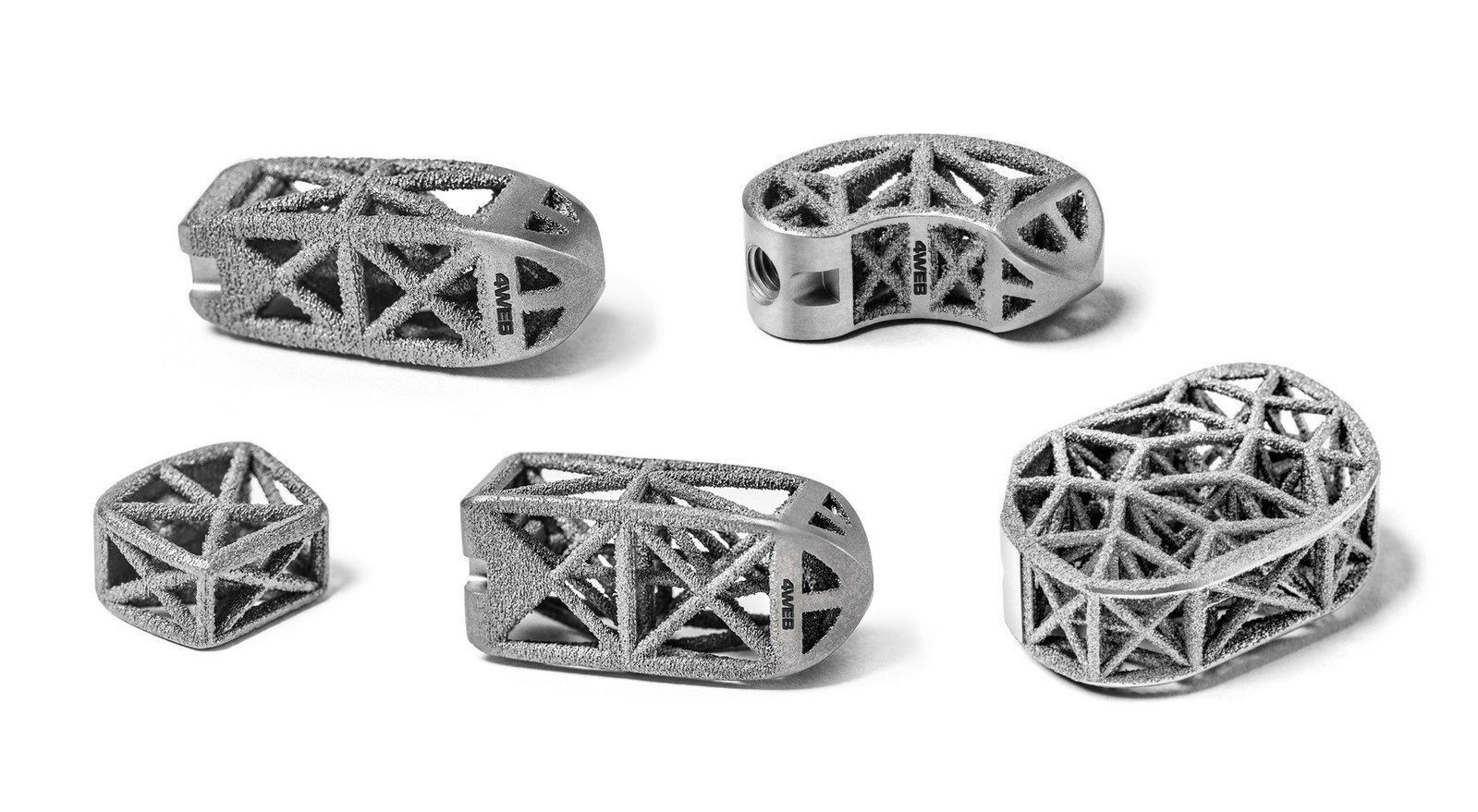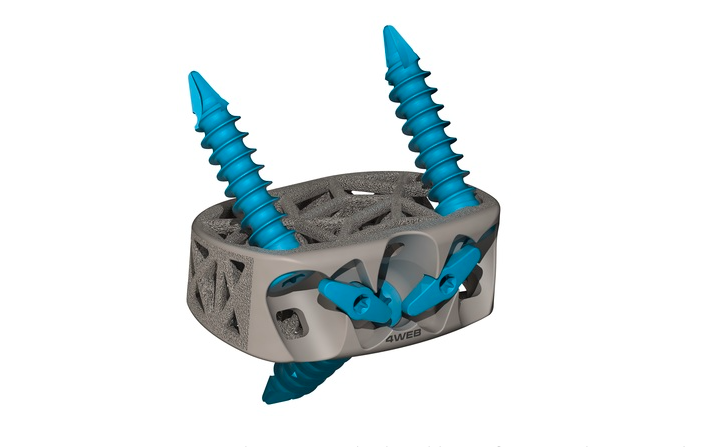Orthopedic implant company 4WEB Medical has added a Stand-Alone Anterior Spine Truss System (ASTS-SA) to its 3D printed spine implant portfolio.
4WEB Medical’s latest additive surgical device features an enhanced dual-step locking system, which prevents spinal screws from backing out, and provides surgeons with greater confidence during procedures. What’s more, as the ASTS-SA has been created with the firm’s own Truss Implant Technology, it displays the same enhanced healing characteristics as the rest of its transplant range.
According to James Lynch, the neurosurgeon, and CEO of Spine Nevada who performed the first operation with the device, its integrated structure provides numerous time and cost benefits to its end-user. “The addition of integrated screws to the implant allows for an ALIF procedure that eliminates the need for supplemental fixation or plating,” said Dr. Lynch.
“This, coupled with all of the advantages provided by 4WEB’s proprietary Truss Technology, results in not only cost savings, but also a quicker and more minimally-invasive procedure that improves patient safety, and enhances clinical outcomes,” he added.

The ‘4WEB geometry’ and Truss Implant Technology
Founded in 2008, 4WEB Medical manufactures surgical implants utilizing a novel geometry it discovered a few years ago, which it refers to as the ‘4WEB.’ The 4WEB forms the basis of the company’s design process, and the geometry can reportedly be used as a ‘building block’ to create a variety of high-strength, lightweight web structures.
After unearthing the 4WEB geometry, the company combined it with modern 3D printing to form its proprietary Truss implant platform, on which all of its products are currently based. Within its manufacturing process, 4WEB Medical’s Truss technology is used to create a hierarchical surface roughness, which carves out features that range from the macro to a nano-scale.
As well as enabling the production of parts with complex geometries, the approach also provides an environment that allows for bone growth and fusion. For instance, in 4WEB Medical’s own in-vitro tests, stem cells cultured in its devices exhibited an increase in osteogenic markers when compared to titanium or PEEK implants.
The safety and sterility of the company’s technology was recognized by the U.S. Food and Drug Administration (FDA) in 2016, which granted 510k approval to the company’s ‘Lateral Spine Truss System.’ Since then, 4WEB Medical has gone on to launch a series of additive implants which now includes Cervical, Lateral, Anterior, Posterior and Osteotomy Truss Systems.

4WEB Medical’s Anterior Spine Truss System
With the launch of its latest Anterior System, 4WEB Medical has designed a customized device for use within the Anterior Lumbar Interbody Fusion (ALIF) surgical procedure. The operation is often used to treat spinal disorders such as degenerative disc disease, and it broadly involves a device being implanted using a posterior approach, near the patient’s intervertebral disk.
4WEB Medical’s ASTS-SA product is a standalone device, meaning that it doesn’t require any additional plating to be used during surgery, which reduces the associated times and costs of ALIF. The Anterior System’s layout also features a novel dual-step locking mechanism, which prevents it from becoming loose, while making the operation safer in the process.
The company’s new product line is also characterized by the same structural benefits as the rest of its Truss Technology Systems. Under loading, the device’s struts transfer the strain to adjacent cellular material, which in turn, stimulates a mechanobiologic response that can be beneficial to the healing process.
4WEB’s ASTS-SA implant is now available in multiple footprints, lordotic angles, and heights, in order to accommodate varying patient anatomies. According to Tasha White, VP of Marketing for 4WEB Medical, the product is expected to perform very well from a commercial standpoint too.
“The launch of the stand-alone anterior interbody implant is a significant milestone for 4WEB and is the latest example of the company’s continued commitment to invest in product development, clinical research, and procedural based solutions,” said White.
“We are excited to provide this best in class procedural solution and anticipate that this product will drive considerable revenue growth for the company,” she added.
Additive applications in spinal surgery
Metal 3D printing is increasingly being deployed by healthcare companies to produce tiny, complex medical-grade implants, and numerous variations of the technology have been experimented with in recent years.
Medical device manufacturer Nexxt Spine, for instance, uses machines from GE Additive to produce its MATRIXX family of porous titanium spinal fusion implants. Utilizing 3D printing, the company is able to control the entire design, production, and distribution process of its cell-healing grafts in-house.
Pennsylvania-based spinal care development firm Centinel Spine meanwhile, has also gained 510k approval from the FDA for its 3D printed implant devices. The company’s FLX Platform of titanium fusion implants, stabilize the vertebrae from the front (anterior) of the spine, which accelerates the healing process for patients
Elsewhere, Emerging Implant Technologies (EIT) (which is owned by Johnson & Johnson), has received FDA approval for its patented Cellular Titanium Technology. The 3D printed devices, which were reported to be the first of their kind, featured a structure that mimicked that of the cancellous and cortical structure of bone.
To stay up to date with the latest 3D printing news, don’t forget to subscribe to the 3D Printing Industry newsletter or follow us on Twitter or liking our page on Facebook.
Are you looking for a job in the additive manufacturing industry? Visit 3D Printing Jobs for a selection of roles in the industry.
Featured image shows 4WEB Medical’s 3D printed Anterior spinal implant device. Image via 4WEB Medical.



